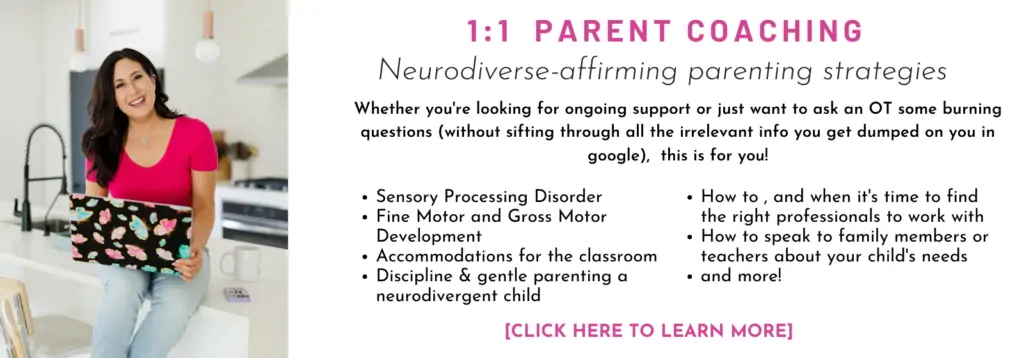Get your FREE sensory profiles cheat sheet >>click here<<
Alerting Sensory Strategies For the Classroom

One of the challenges of having an under-responsive student is that they don’t initiate the seeking or requesting of particular sensory input. These students passively miss sensory input, and while they benefit from increased sensory input to increase their arousal, they don’t actively seek it out.
These students need alerting sensory input, especially during the school day so they can be alert and focused to learn. Moving with intense and fast input can increase arousal, though there are certain times when it’s not totally appropriate to be up and moving. Here are some of my favorite non-movement ways to integrate alerting sensory strategies into the classroom.
Alerting Smell Input
Stimulating the smell sense is a really easy way to “wake up” without being distracting to others, that requires no movement or extra materials. Scents such as peppermint, citrus, cinnamon, eucalyptus and lavender are all examples of alerting sensory input. Some ways to work this into the environment include:
- Using lip smackers or other scented chapstick as “wrist tattoos”
- Place essential oils into this essential oil bracelet for kids. (affiliate link)
- Place a piece of painter’s tape around the top of the pencil and dab some alerting essential oils onto it
- Use smelly markers or smelly pencils
- Place essential oils into bottle rollers and roll onto wrist
- Place a few drops of essential oils into a spray bottle with water and spray the room with it

Alerting Oral Input
Different textured foods, drinks and other oral tools can be helpful for focusing on lessons during the school day or while completing homework. These foods and tools provide some big alerting sensory input to the mouth.
- Sour candy
- Sour candy spray (affiliate link)
- z-vibe oral motor tool (affiliate link)
- mints or altoids
- minty or sour flavored gum
- spicy chips
- thick, cold smoothie
- sour lollipops
- ginger candy
- eating citrus fruits

Other Sensory Profiles to Consider
Children can be over responsive (sensitive), under responsive (needs more input), or craving (insatiable for input) to any kind of sensory input. One sensory tool does not fit all. It’s important to understand each student’s sensory profile before applying sensory strategies in the classroom.
For example, if a student is over responsive (sensitive) to smell or taste, the above alerting inputs would not benefit them. It’s important to consider differing sensory profiles in the classroom and be intentional about seating students. For example, you wouldn’t want to seat a smell seeker next to a smell sensitive student. That sounds like a recipe for disaster!
If you’re interested in learning more about sensory processing impact in the classroom, take a look at some of these resources:
*Free Sensory Systems Handout for Parents





